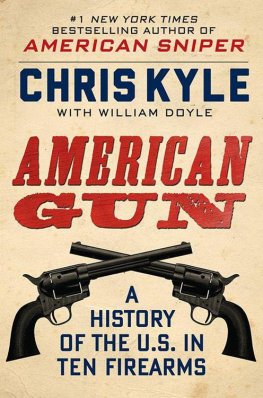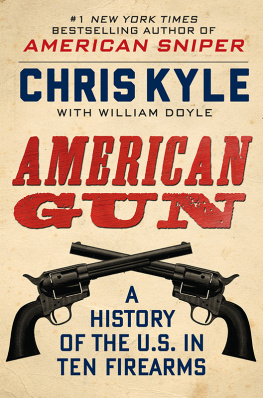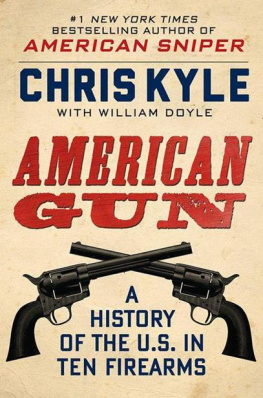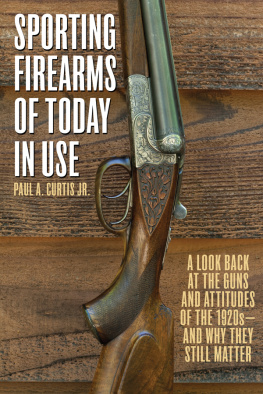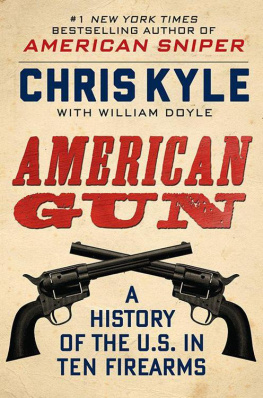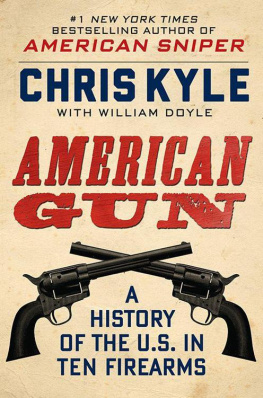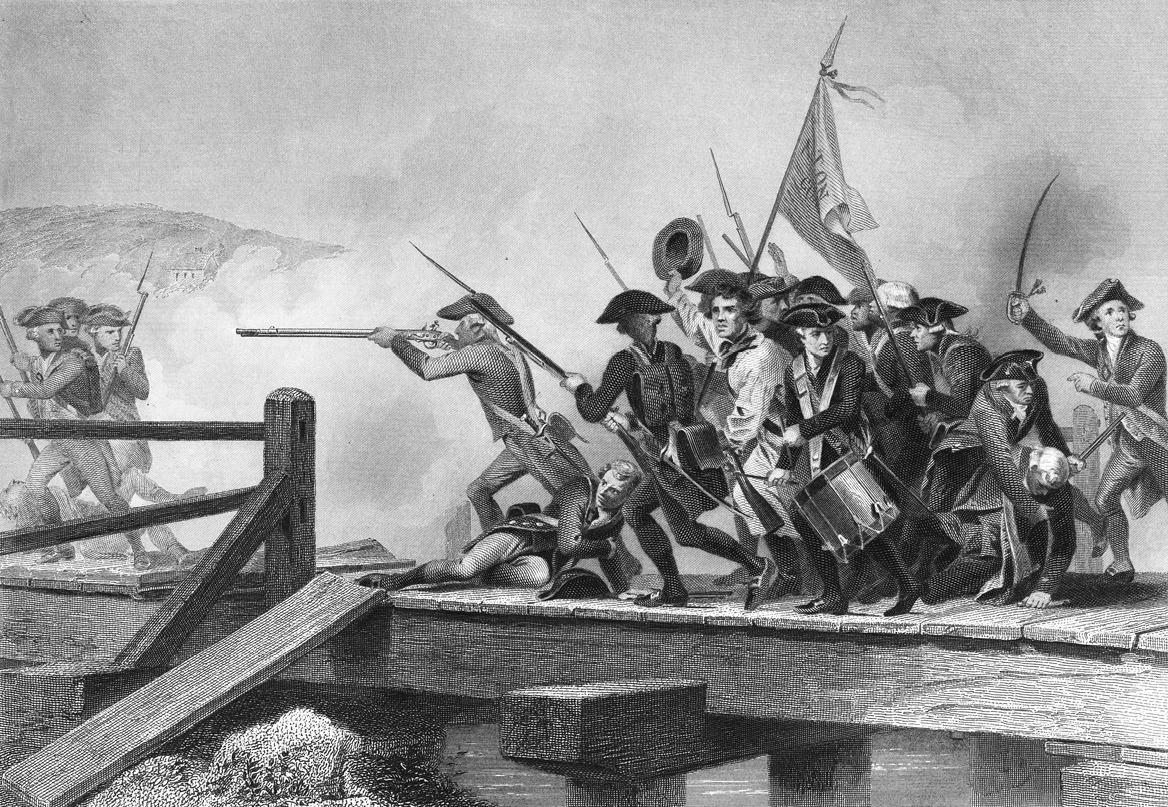Without sulfur and saltpeter... there can be no freedom.
You come against me with sword and spear and javelin, but I come against you in the name of the Lord Almighty, the God of the armies of Israel, whom you have defied.
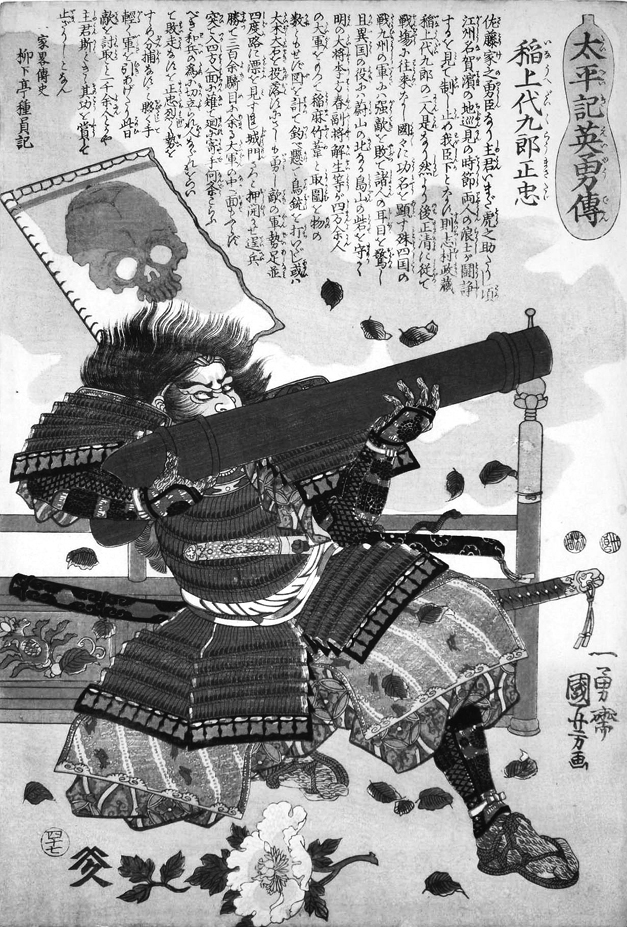
A samurai shooting an early firearm in the mid-1600s
T he future king of Israel wasnt entirely forthcoming. After all, in addition to the blessing of the Lord Almightyor, perhaps because of itDavid was also in possession of a major technological advantage. By the time he faced the Philistine giant in the Valley of Elah, the sling had emerged as one of the most potent projectile weapons of the ancient world. The meager sword was no match for David. Not when he was armed with a missile launcher that held a stopping power equivalent to a small-caliber bullet. If for some reason Goliath had been unacquainted with the slings capability, he would soon learn, as would millions of others in the coming millennia, that superior size meant little when facing superior firepower.
Inventing and perfecting weapons that could kill others from afar was a concern nearly as old as human existence itself. From almost the beginning men had been throwing things at each other. Lethal thingsprojectiles that could slice through his enemys skin, pierce through his armor, burn his foes, and, ultimately, blow them up. Davids weapon was a mere blip in an arms race that spans tens of thousands of years, from rocks, spears, slingshots, bows and arrows, javelins, catapults, and cannons, to the predominant guns of American colonial life, the musket and rifle, and, finally, the automatic weapon.
To hit Goliath square in the forehead, David had been incredibly proficient with his weapon. As a shepherd protecting his flock from predators and thieves, David, who was also likely a soldier, had an intuitive understanding of his release pointa skill mastered only through years of experience. Attaining proficiency with a handheld missile launcher was no mere hobby for a man of his era or those of any another. It was a means of survival. For most of history, in fact, men lived their entire lives under the unremitting threat of violence.
Despite the tendency in contemporary culture to envision prehistoric man meandering on breezy plains with fellow villagers or cohabitating in serene villages, most humans pursued a policy of proactive martial violence against other members of their species. Man has habitually been in a state of war. Evidence of this bellicose disposition is strewn across the ancient and prehistoric world. Peaceful pre-state societies were very rare; warfare between them was very frequent and most adult men in such groups saw combat repeatedly in a lifetime, Lawrence H. Keeley, an anthropologist at the University of Illinois at Chicago, recently observed.
In this environment, a human could best defend himself by creating space between himself and his enemy. Man probably developed ranged weaponsarms that could hit targets at distances greater than hand-to-hand combataround 71,000 years ago in Africa. Not only did the ranged
The first ranged weapons were probably made of long, thin blades of stone that were blunted on one edge and then glued into slots that were carved in wood or bone, creating a light arm that could hurl projectiles. The sling itself has been in use for around 10,000 years, if not longer. Ancient warriors and hunters typically made their pouches from animal hides and used hair or sinews to make a cord. The earliest ammunition, the kind of smooth stones that David relied on to slay the giant, were abundant around the many streams, lakes, and rivers that humans first gathered around to form their societies.
The equipment David used to smite Goliath was certainly not new to the Jews, who had exploited slingers to expand their small kingdomand would continue to do so in the coming century. Archaeologists have found slings in Egypt dating to around the time of David. The ability to fire projectiles in an arching trajectory over the walls to strike defenders was a significant upgrade in ancient warfare, which typically pitted men against each other in feats of strength, making it indispensable for armies well into the Iron Age.
As effective as the sling was, however, for most of human history one weapon ruled them all. The earliest evidence of bows and arrows date back to 20,000 BC, in cave paintings in La Valltorta Gorge, Spain, in which hunters are depicted aiming their bows at game with arrows jutting out of their hides. Sometime over the subsequent thousand years, we began to see feathers added to improve aim and flight, and flint points bound by sinew to add deadliness. Man would figure out ways to make their projectiles increasingly lethal, from daubing arrows in poison to dipping them in excrement to cause infections.
Holmegaard bows, found in the bogs of northern Europe and made from single pieces of wood, have been dated to 9,000 BC and were long, stiff weapons that used the outer limbs as levers; their efficiency was comparable to todays high-performance bows. To put such bows and arrows in perspective, its fair to say that in terms of range, accuracy, and rapidity, these were preferable to most early guns. As well see, even after hundreds of years of propelling objects with gunpowder in Europe, the bow was still the weapon of choice.
The next step in range warfare was, naturally, trying to light your enemies on fire from afar. As with many discoveries of the ancient world, we will never have a firm date or definitive names attached to the discovery of gunpowder, but at some point between the years 600 and 900 CE, Chinese alchemists searching for an elixir for immortality combined saltpeter, sulfur, and charcoal and inadvertently stumbled upon a man-made recipe that would cause more premature death than any other mixture in history.
In the eleventh-century Song dynasty book called the Wujing Zongyao , a Chinese military compendium of techniques for war, the unknown author mentions incendiary bombs being thrown by siege engineers on catapults, as well as fire lances, which shot flames and debris out of bamboo tubes attached to spears and can probably be considered the first guns ever invented. An abundance of bamboo offered a convenient cylindrical container to stuff gunpowder into, making it easy to create fireworks. Innovators with deadly intent figured out that a larger amount of gunpowder could launch broken porcelain and various other fragments at people they didnt like. Soon the military appropriated the idea and began replacing wood with metal tubes and pottery with a fatal mix of flames and shrapnel.


